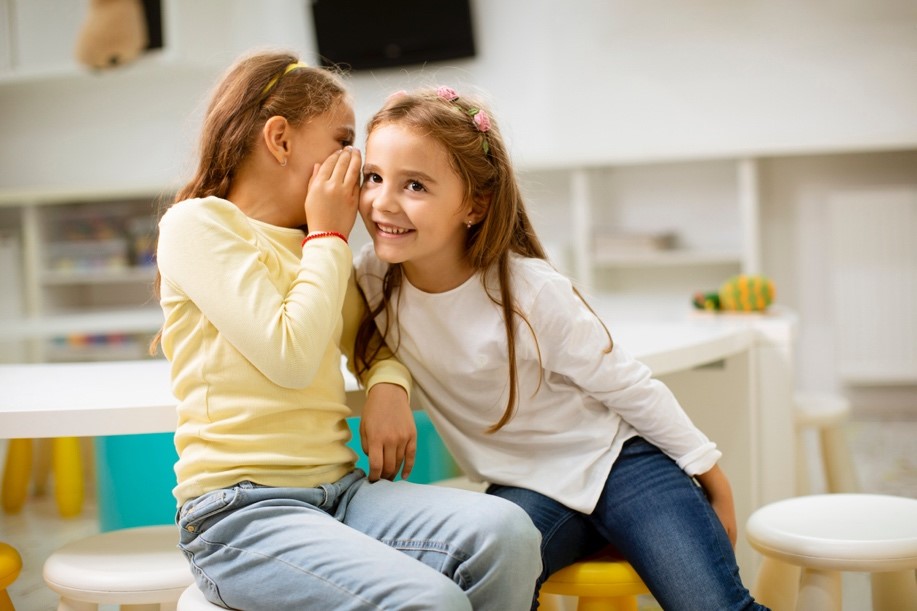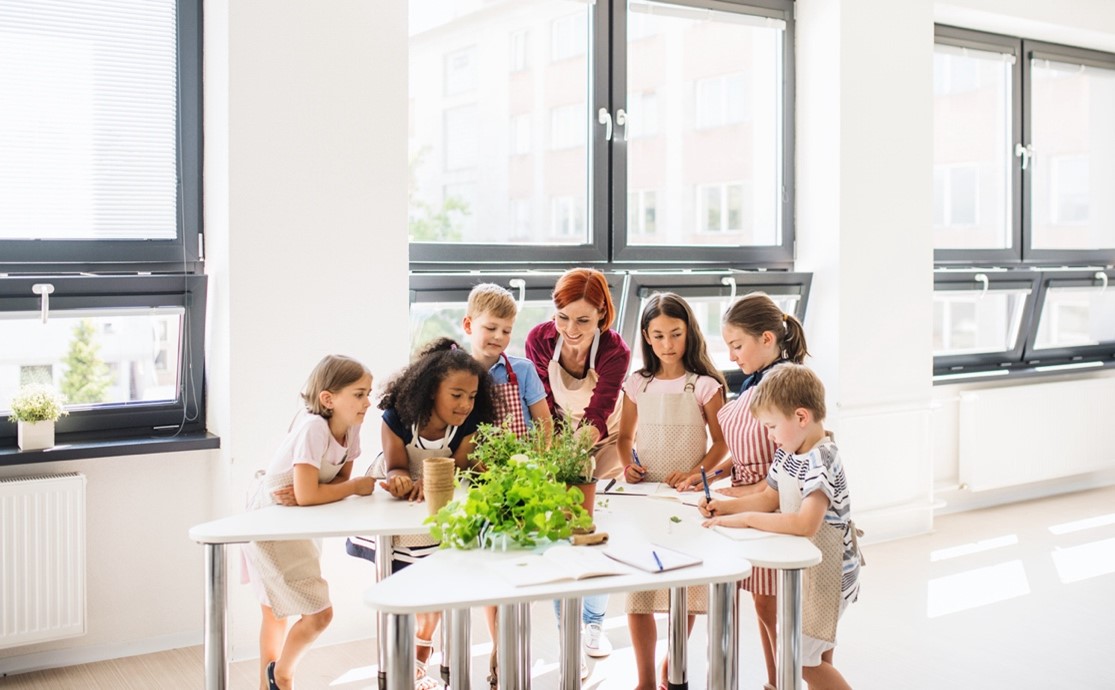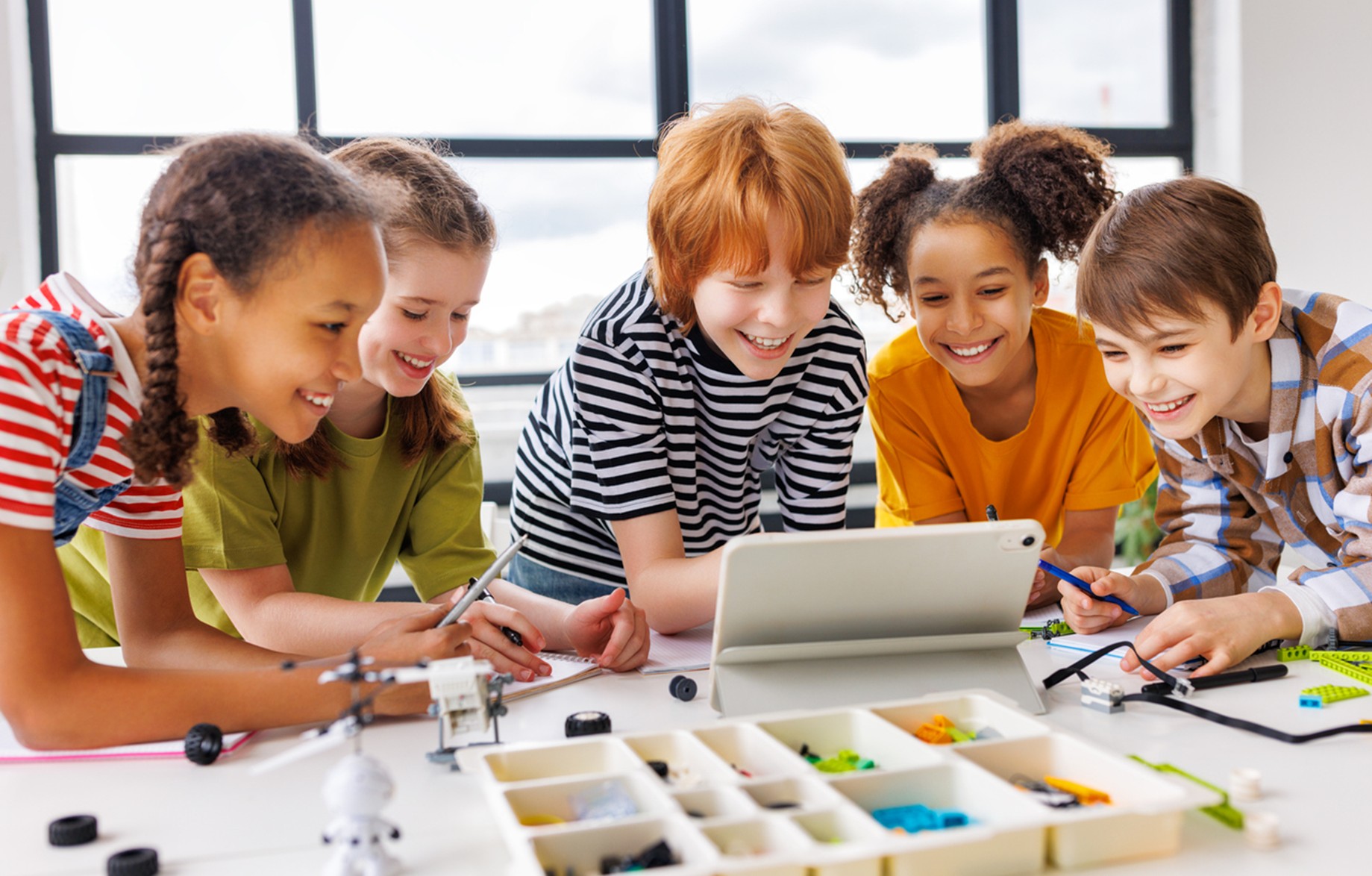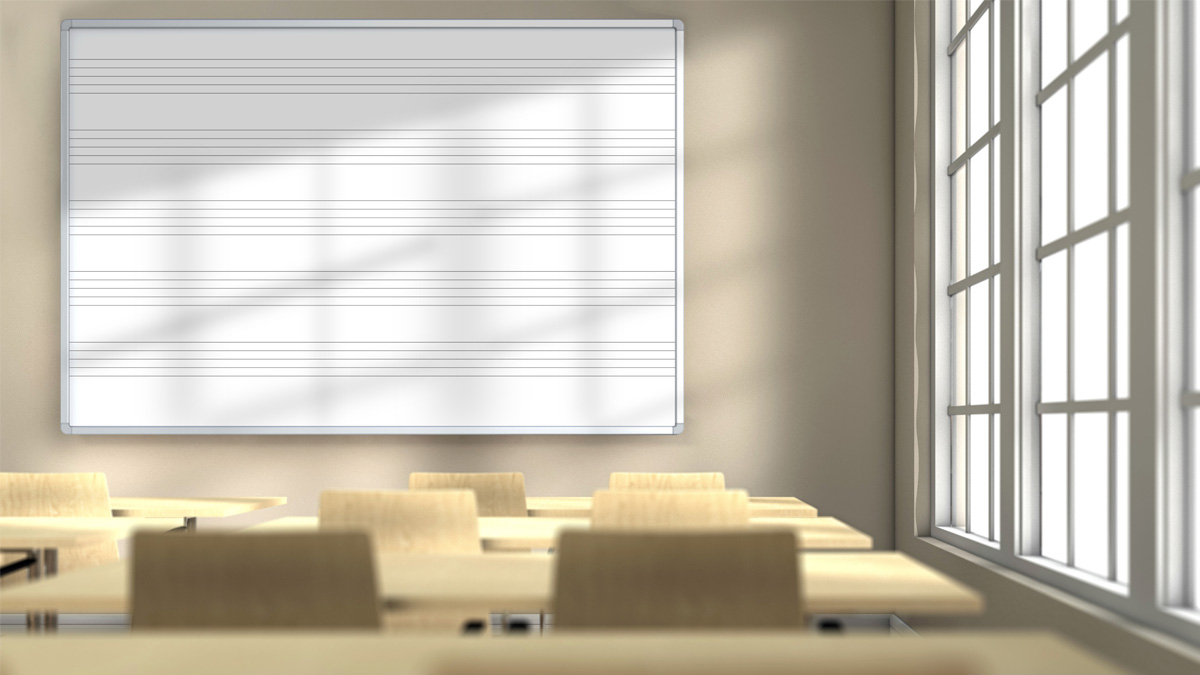Imagine going to a conference presentation and being asked to sit in uncomfortable seating, in a cold dimly lit basement room with no windows, with cement walls and floors that amplify audience member sounds making it difficult to hear what the speaker is saying. Chances are your ability to learn would be severely impacted by the design of that space! Learning space design impacts learners of all ages.
The design of learning spaces has emerged as a critical factor in educational success, with mounting research evidence demonstrating that physical environments can significantly influence student engagement, well-being, and academic achievement.
Researchers suggest that 10 to 15 percent of variance in academic outcomes is influenced by the environment. Studies highlight the substantial impact that thoughtful classroom design can have on learning outcomes. This article examines the key physical design elements that contribute to effective learning environments, including lighting, natural environment integration, seating arrangements, and overall classroom layout.
Lighting: The Critical Role of Natural and Artificial Illumination
Lighting stands out as one of the most influential design elements in classroom environments, with both natural and artificial light sources playing crucial roles in student performance and well-being. Optimized lighting, especially light coming from natural sources, enhances student achievement and well-being, establishing a clear connection between illumination quality and academic outcomes.
Natural lighting offers particular benefits for student learning and development. Natural light enhances mood and promotes a positive learning atmosphere. It helps regulate circadian rhythms, improving students’ alertness and focus. This biological impact is especially important given the role of circadian rhythms in cognitive function and attention regulation. Light resets the body’s circadian rhythm, so exposing teens to light can increase their alertness and improve academic outcomes, making natural lighting particularly valuable for adolescent learners who often struggle with early morning alertness.
The physiological benefits of proper lighting extend beyond basic visibility. Well-designed lighting systems support cognitive processes by reducing eye strain, minimizing fatigue, and maintaining consistent levels of alertness throughout the school day. Studies have shown that specific color schemes and lighting choices can impact students’ mood, energy, and even cognitive performance, indicating that lighting design must consider not only intensity but also color temperature and quality to maximize educational benefits.

Natural Environment Integration and Biophilic Design
The integration of natural elements into learning environments represents a growing area of interest in educational design research. Biophilic design principles, which incorporate natural materials, views of nature, and organic forms into built environments, have shown promising results in educational settings. Natural elements in classrooms can reduce stress, improve concentration, and enhance overall well-being among students and teachers alike.
Research indicates that exposure to natural environments and natural elements within learning spaces can improve cognitive function, particularly in areas of attention restoration and stress reduction. Students in classrooms with views of natural landscapes or integrated natural elements often demonstrate improved focus, reduced behavioral problems, and enhanced creative thinking. These benefits appear to stem from the restorative properties of nature, which help counteract the mental fatigue associated with sustained cognitive effort.
The incorporation of plants, natural materials like wood and stone, and design elements that mimic natural forms can create more inviting and psychologically comfortable learning environments. These elements work synergistically with proper lighting to create spaces that support both the physiological and psychological needs of learners.

Seating Arrangements and Furniture Design
Classroom seating arrangements and furniture design play pivotal roles in shaping learning experiences and academic outcomes. Well-designed furniture also helps students stay engaged and comfortable throughout learning activities. The strategic arrangement of seating can influence social interactions, attention patterns, and overall classroom dynamics.
The social dynamics of seating arrangements also merit careful consideration. One 2021 study found that assigned seating can forge new friendships between students who would otherwise never bond. Another suggests that intentionally separating close friends can reduce classroom disruptions by as much as 70 percent.
Modern classroom furniture design increasingly emphasizes flexibility and adaptability, recognizing that different learning activities require different spatial configurations. Moveable desks, varied seating options, and modular furniture systems allow educators to quickly reconfigure spaces to support collaborative work, individual study, or whole-group instruction as needed.
Comprehensive Environmental Design Approaches
The most effective learning environment design approaches consider the interplay between multiple environmental factors rather than focusing on individual elements in isolation. Successful classroom design integrates lighting, natural elements, furniture arrangement, acoustics, color schemes, and spatial organization to create cohesive environments that support diverse learning needs and styles.
Color psychology plays an important role in comprehensive environmental design. When thoughtfully applied, these elements help create a conducive learning environment that supports both student well-being and academic success. Warm colors – such as lighter shades of yellow, orange, and red – can create inviting, comfortable atmospheres that encourage social interaction and creative thinking, while cooler colors may support focus and concentration during individual work periods. Ideally, using warm colors on trim, with more neutral wall colors, can be particularly effective.
Acoustic design represents another critical component of effective learning environments. Proper sound management through strategic placement of sound-absorbing materials, careful attention to room geometry, and consideration of external noise sources can significantly improve learning conditions. Poor acoustics can impair comprehension, increase cognitive load, and contribute to teacher fatigue, while well-designed acoustic environments support clear communication and focused attention.
Implications for Educational Practice and Policy
The growing body of research on learning environment design has significant implications for educational practice and policy development. Schools and educational institutions increasingly recognize the need to invest in physical infrastructure that supports learning objectives rather than simply providing basic shelter and furniture.
Educational designers and architects now work closely with educators and learning scientists to create evidence-based design solutions that address specific pedagogical goals. This collaborative approach ensures that physical design elements align with educational philosophies and teaching methods, creating synergistic relationships between space and pedagogy.
Policy implications include the need for design standards that prioritize learning outcomes over purely aesthetic or economic considerations. Educational facility planning must incorporate research-based design principles while remaining flexible enough to accommodate evolving educational practices and technologies.
The design of learning environments represents a powerful lever for improving educational outcomes, with research demonstrating measurable impacts on student achievement, engagement, and well-being. From the strategic use of natural lighting to thoughtful seating arrangements and comprehensive environmental design approaches, physical spaces shape learning experiences in profound ways. As educational institutions continue to evolve and adapt to changing pedagogical approaches, the integration of evidence-based design principles becomes increasingly critical for creating environments that truly support student success. The investment in well-designed learning spaces represents not merely an aesthetic choice, but a fundamental commitment to educational excellence and student achievement.
This article is based, in part, on data from the following research review study:
Peter Barrett, Fay Davies, Yufan Zhang, Lucinda Barrett, The impact of classroom design on pupils’ learning: Final results of a holistic, multi-level analysis, Building and Environment, Volume 89, 2015, https://doi.org/10.1016/j.buildenv.2015.02.013.
 Leslie Stebbins is the director of Research4Ed. She has more than twenty-five years of experience in higher education and K-12 learning and instructional design. She has an M.Ed. from the Technology Innovation & Education Program at the Harvard Graduate School of Education and a Master’s in Library and Information Science from Simmons College.
Leslie Stebbins is the director of Research4Ed. She has more than twenty-five years of experience in higher education and K-12 learning and instructional design. She has an M.Ed. from the Technology Innovation & Education Program at the Harvard Graduate School of Education and a Master’s in Library and Information Science from Simmons College.








